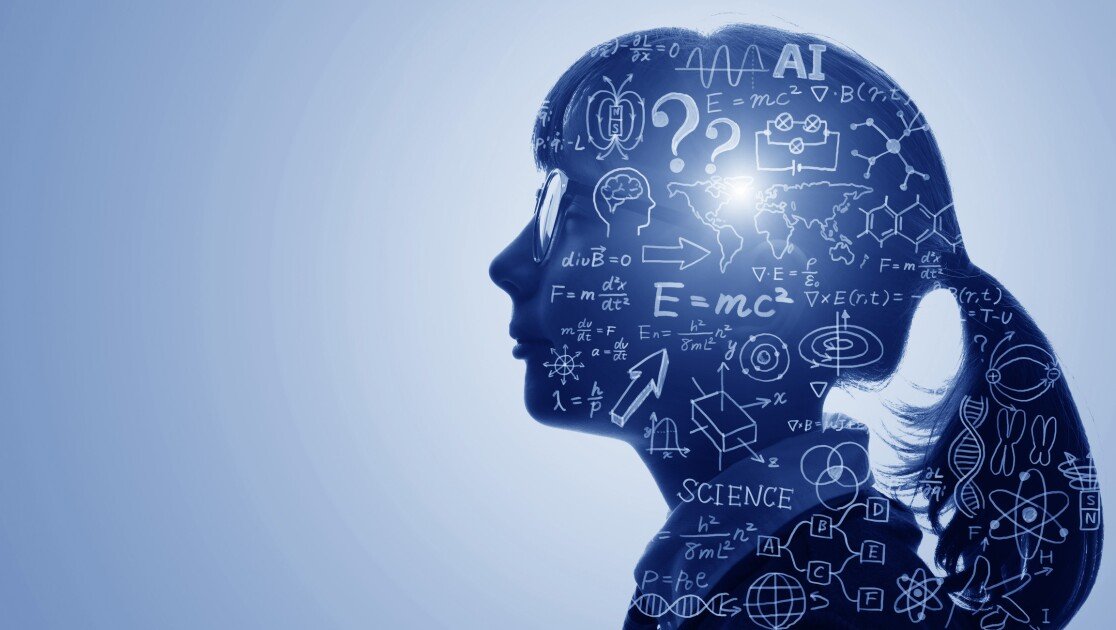AI Insights
How AI Simulations Match Up to Real Students—and Why It Matters

AI-simulated students consistently outperform real students—and make different kinds of mistakes—in math and reading comprehension, according to a new study.
That could cause problems for teachers, who increasingly use general prompt-based artificial intelligence platforms to save time on daily instructional tasks. Sixty percent of K-12 teachers report using AI in the classroom, according to a June Gallup study, with more than 1 in 4 regularly using the tools to generate quizzes and more than 1 in 5 using AI for tutoring programs. Even when prompted to cater to students of a particular grade or ability level, the findings suggest underlying large language models may create inaccurate portrayals of how real students think and learn.
“We were interested in finding out whether we can actually trust the models when we try to simulate any specific types of students. What we are showing is that the answer is in many cases, no,” said Ekaterina Kochmar, co-author of the study and an assistant professor of natural-language processing at the Mohamed bin Zayed University of Artificial Intelligence in the United Arab Emirates, the first university dedicated entirely to AI research.
How the study tested AI “students”
Kochmar and her colleagues prompted 11 large language models (LLMs), including those underlying generative AI platforms like ChatGPT, Qwen, and SocraticLM, to answer 249 mathematics and 240 reading grade-level questions on the National Assessment of Educational Progress in reading and math using the persona of typical students in grades 4, 8, and 12. The researchers then compared the models’ answers to NAEP’s database of real student answers to the same questions to measure how closely AI-simulated students’ answers mirrored those of actual student performance.
The LLMs that underlie AI tools do not think but generate the most likely next word in a given context based on massive pools of training data, which might include real test items, state standards, and transcripts of lessons. By and large, Kochmar said, the models are trained to favor correct answers.
“In any context, for any task, [LLMs] are actually much more strongly primed to answer it correctly,” Kochmar said. “That’s why it’s very difficult to force them to answer anything incorrectly. And we’re asking them to not only answer incorrectly but fall in a particular pattern—and then it becomes even harder.”
For example, while a student might miss a math problem because he misunderstood the order of operations, an LLM would have to be specifically prompted to misuse the order of operations.
None of the tested LLMs created simulated students that aligned with real students’ math and reading performance in 4th, 8th, or 12th grades. Without specific grade-level prompts, the proxy students performed significantly higher than real students in both math and reading—scoring, for example, 33 percentile points to 40 percentile points higher than the average real student in reading.
Kochmar also found that simulated students “fail in different ways than humans.” While specifying specific grades in prompts did make simulated students perform more like real students with regard to how many answers they got correct, they did not necessarily follow patterns related to particular human misconceptions, such as order of operations in math.
The researchers found no prompt that fully aligned simulated and real student answers across different grades and models.
What this means for teachers
For educators, the findings highlight both the potential and the pitfalls of relying on AI-simulated students, underscoring the need for careful use and professional judgment.
“When you think about what a model knows, these models have probably read every book about pedagogy, but that doesn’t mean that they know how to make choices about how to teach,” said Robbie Torney, the senior director of AI programs at Common Sense Media, which studies children and technology.
Torney was not connected to the current study, but last month released a study of AI-based teaching assistants that similarly found alignment problems. AI models produce answers based on their training data, not professional expertise, he said. “That might not be bad per se, but it might also not be a good fit for your learners, for your curriculum, and it might not be a good fit for the type of conceptual knowledge that you’re trying to develop.”
This doesn’t mean teachers shouldn’t use general prompt-based AI to develop tools or tests for their classes, the researchers said, but that educators need to prompt AI carefully and use their own professional judgement when deciding if AI outputs match their students’ needs.
“The great advantage of the current technologies is that it is relatively easy to use, so anyone can access [them],” Kochmar said. “It’s just at this point, I would not trust the models out of the box to mimic students’ actual ability to solve tasks at a specific level.”
Torney said educators need more training to understand not just the basics of how to use AI tools but their underlying infrastructure. “To be able to optimize use of these tools, it’s really important for educators to recognize what they don’t have, so that they can provide some of those things to the models and use their professional judgement.”
AI Insights
Goldman Sachs Warns An AI Slowdown Can Tank The Stock Market By 20%

Artificial intelligence has propelled the stock market to all-time highs, but Goldman Sachs (NYSE:GS) recently warned that once AI spending slows down, the stock market can tank by 20%. A research note from Goldman Sachs Analyst Ryan Hammond cited the danger of hyperscalers inevitably cutting back on AI expenditures, according to Fortune.
“A reversion of long-term growth estimates back to early 2023 levels would imply 15% to 20% downside to the current valuation multiple of the S&P 500,” Hammond reportedly wrote in his research note.
Don’t Miss:
Right now, AI spending is full steam ahead, but Hammond wrote that a few analysts are assuming that a sharp deceleration will take place in Q4 2025 and 2026.
Tech giants haven’t gotten the memo. Meta Platforms (NASDAQ:META) said this week it will spend $600 billion on AI over the next three years. Zuckerberg later posted on Threads that it’s possible the company will invest more than $600 billion during those three years. He even said a “significantly higher number” was likely through the end of the decade.
Microsoft (NASDAQ:MSFT) made another big AI deal this week by securing a five-year, $17.4 billion AI infrastructure deal with Nebius (NASDAQ:NBIS). This type of rapid spending indicates AI growth can continue beyond the current rally.
Trending: ‘Scrolling To UBI’ — Deloitte’s #1 fastest-growing software company allows users to earn money on their phones. You can invest today for just $0.30/share.
Artificial intelligence plays a critical role in the stock market’s performance based on the top companies in major benchmarks like the S&P 500 and Nasdaq. Data from Slickchart shows that top AI beneficiary Nvidia (NASDAQ:NVDA) makes up approximately 7% of the S&P 500.
The top eight publicly traded corporations on the S&P 500 are all heavily invested in artificial intelligence. They are ramping up their AI spending and aim to release products and services that use AI. These eight companies make up more than 36% of the S&P 500.
There are also corporate giants outside of the S&P 500’s top 10 that still invest heavily in artificial intelligence. Oracle (NYSE:ORCL), Palantir (NASDAQ:PLTR), and Cisco (NASDAQ:CSCO) are some of the most notable S&P 500 members in the category.
AI Insights
A Sample Grant Proposal on “Artificial Intelligence for Rural Healthcare” – fundsforNGOs
AI Insights
Robinhood CEO says just like every company became a tech company, every company will become an AI company

Earlier advances in software, cloud, and mobile capabilities forced nearly every business—from retail giants to steel manufacturers—to invest in digital transformation or risk obsolescence. Now, it’s AI’s turn.
Companies are pumping billions of dollars into AI investments to keep pace with a rapidly changing technology that’s transforming the way business is done.
Robinhood CEO Vlad Tenev told David Rubenstein this week on Bloomberg Wealth that the race to implement AI in business is a “huge platform shift” comparable to the mobile and cloud transformations in the mid-2000s, but “perhaps bigger.”
“In the same way that every company became a technology company, I think that every company will become an AI company,” he explained. “But that will happen at an even more accelerated rate.”
Tenev, who co-founded the brokerage platform in 2013, pointed out that traders are not just trading to make money, but also because they love it and are “extremely passionate about it.”
“I think there will always be a human element to it,” he added. “I don’t think there’s going to be a future where AI just does all of your thinking, all of your financial planning, all the strategizing for you. It’ll be a helpful assistant to a trader and also to your broader financial life. But I think the humans will ultimately be calling the shots.”
Yet, Tenev anticipates AI will change jobs and advised people to become “AI native” quickly to avoid being left behind during an August episode of the Iced Coffee Hour podcast. He added AI will be able to scale businesses far faster than previous tech booms did.
“My prediction over the long run is you’ll have more single-person companies,” Tenev said on the podcast. “One individual will be able to use AI as a huge accelerant to starting a business.”
Global businesses are banking on artificial intelligence technologies to move rapidly from the experimental stage to daily operations, though a recent MIT survey found that 95% of pilot programs failed to deliver.
U.S. tech giants are racing ahead, with the so-called hyperscalers planning to spend $400 billion on capital expenditures in the coming year, and most of that is going to AI.
Studies show AI has already permeated a majority of businesses. A recent McKinsey survey found 78% of organizations use AI in at least one business function, up from 72% in early 2024 and 55% in early 2023. Now, companies are looking to continually update cutting-edge technology.
In the finance world, JPMorgan Chase’s Jamie Dimon believes AI will “augment virtually every job,” and described its impact as “extraordinary and possibly as transformational as some of the major technological inventions of the past several hundred years: think the printing press, the steam engine, electricity, computing, and the Internet.”
-

 Business2 weeks ago
Business2 weeks agoThe Guardian view on Trump and the Fed: independence is no substitute for accountability | Editorial
-
Tools & Platforms1 month ago
Building Trust in Military AI Starts with Opening the Black Box – War on the Rocks
-

 Ethics & Policy2 months ago
Ethics & Policy2 months agoSDAIA Supports Saudi Arabia’s Leadership in Shaping Global AI Ethics, Policy, and Research – وكالة الأنباء السعودية
-

 Events & Conferences4 months ago
Events & Conferences4 months agoJourney to 1000 models: Scaling Instagram’s recommendation system
-

 Jobs & Careers2 months ago
Jobs & Careers2 months agoMumbai-based Perplexity Alternative Has 60k+ Users Without Funding
-

 Podcasts & Talks2 months ago
Podcasts & Talks2 months agoHappy 4th of July! 🎆 Made with Veo 3 in Gemini
-

 Education2 months ago
Education2 months agoMacron says UK and France have duty to tackle illegal migration ‘with humanity, solidarity and firmness’ – UK politics live | Politics
-

 Education2 months ago
Education2 months agoVEX Robotics launches AI-powered classroom robotics system
-

 Podcasts & Talks2 months ago
Podcasts & Talks2 months agoOpenAI 🤝 @teamganassi
-

 Funding & Business3 months ago
Funding & Business3 months agoKayak and Expedia race to build AI travel agents that turn social posts into itineraries

